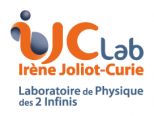Paper: Resonant behavior and stability of a linear three-mirror cavity
Abstract: The implementation of Fabry-Perot cavities in gravitational-wave detectors has been pivotal to improving their sensitivity, allowing the observation of an increasing number of cosmological events with higher signal-to-noise ratio.…









